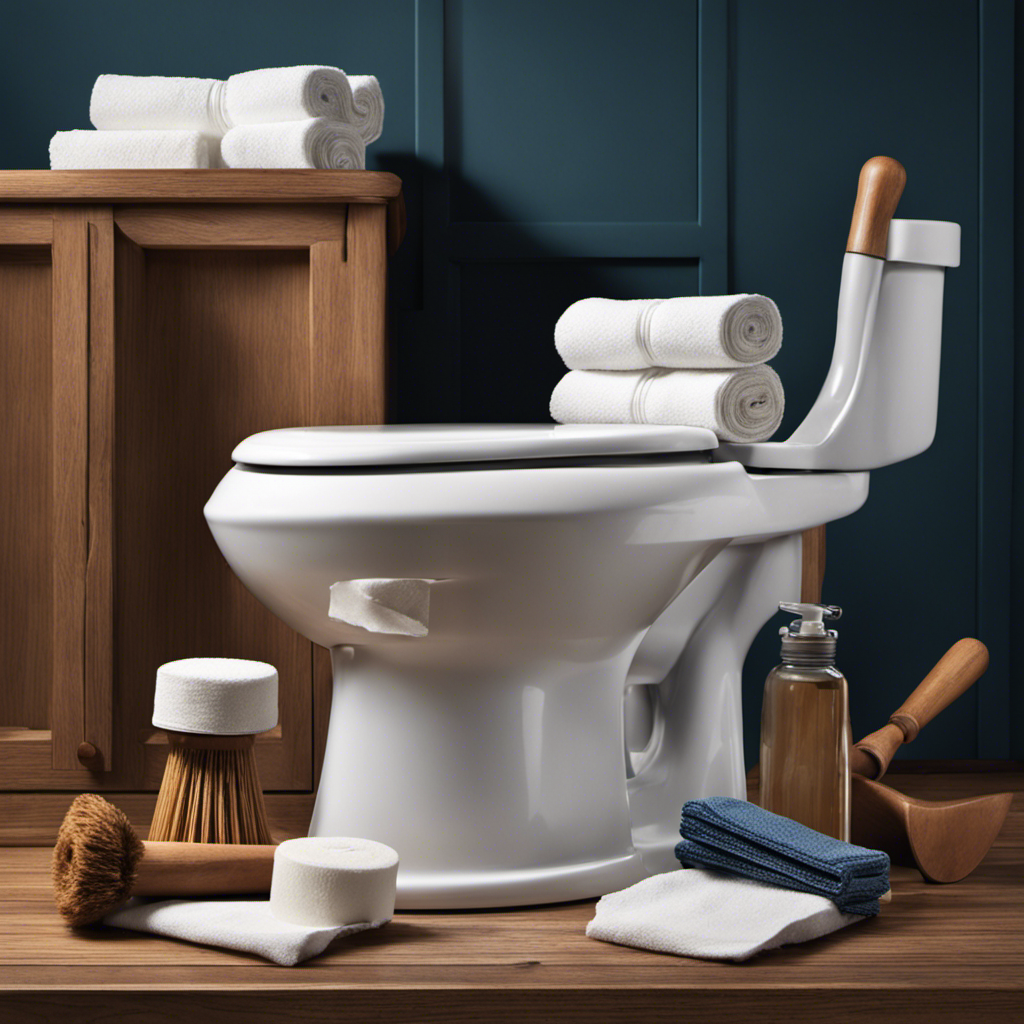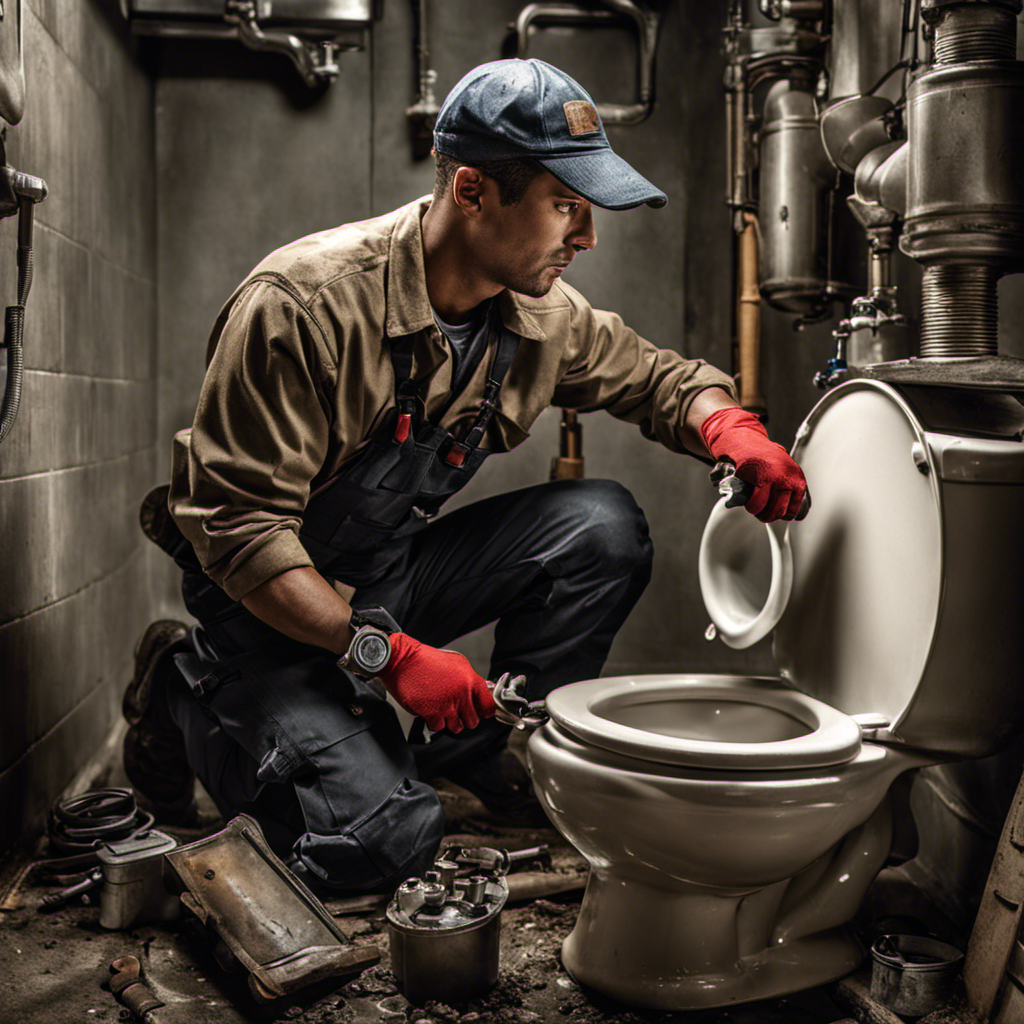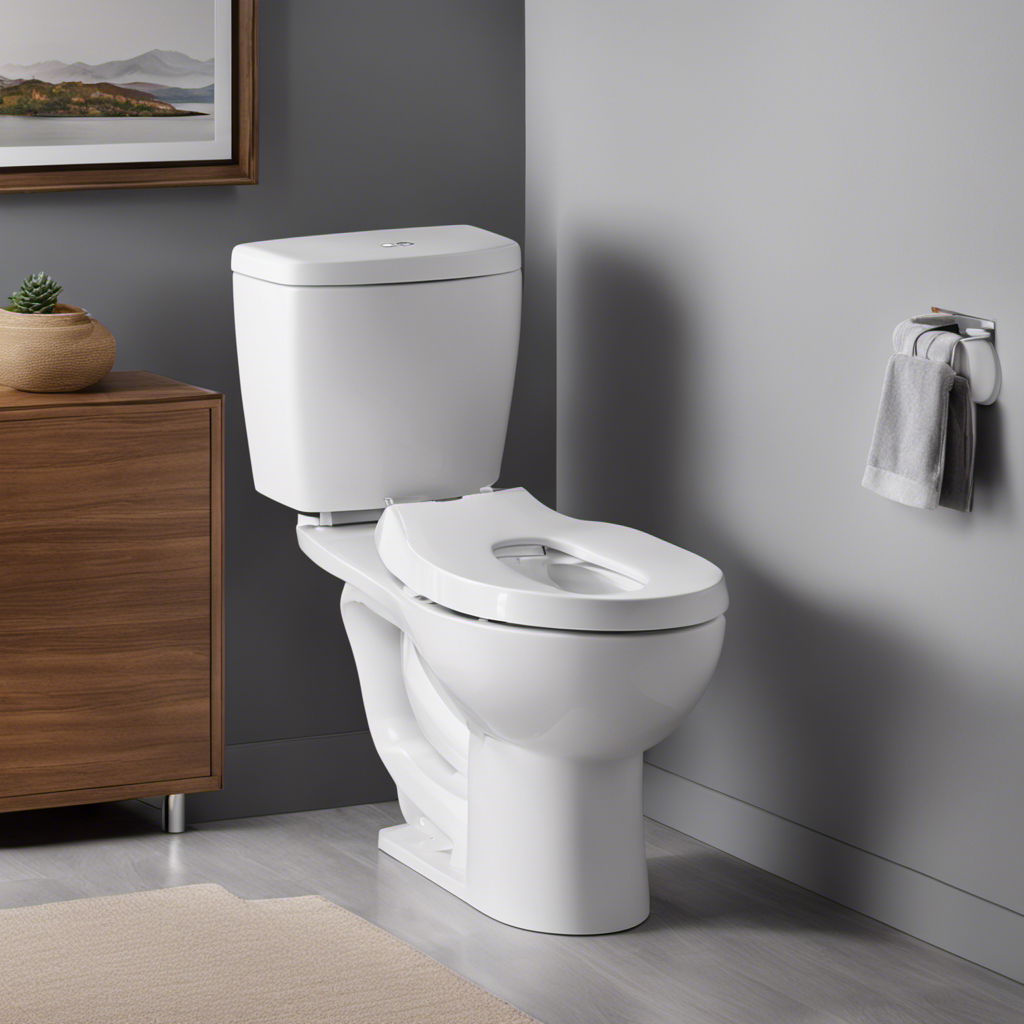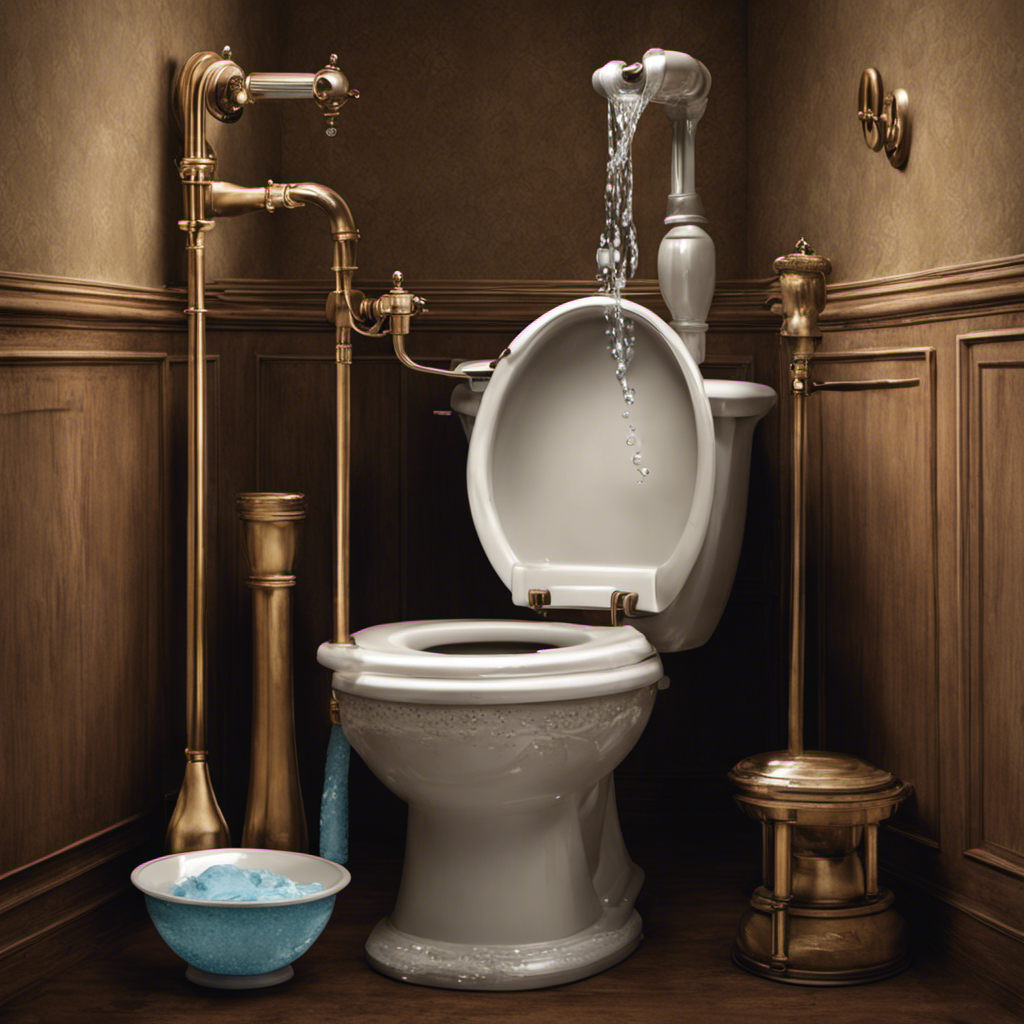I’ve been there – standing in front of a clogged toilet, feeling frustrated and unsure of what to do next. But fear not!
In this article, I’ll show you the step-by-step method for unclogging a toilet, using simple tools and materials that you probably already have at home.
I’ll also provide some helpful tips to prevent future clogs and let you know when it’s time to call in a professional.
So let’s dive in and tackle this common household problem together!
Key Takeaways
- Toilet clogs can be caused by buildup of toilet paper or flushing items that shouldn’t be flushed.
- Tools and materials needed for unclogging a toilet include a plunger, bucket, gloves, and a toilet auger for stubborn clogs.
- Natural remedies like baking soda and vinegar or dish soap and hot water can be effective and safe for unclogging toilets.
- To prevent future clogs, use less toilet paper, flush only biodegradable materials, install a low-flow toilet, and regularly clean the toilet bowl and tank.
Causes of Toilet Clogs
Toilet clogs can occur due to a variety of reasons. Sometimes, it’s simply a buildup of toilet paper or waste that gets stuck in the pipes. Other times, it could be caused by flushing items that shouldn’t be flushed, like baby wipes or feminine hygiene products.
One of the common household remedies to try is using a plunger. This simple tool can create suction and help dislodge the clog. However, if you notice signs of a severe clog, such as water backing up into the bowl or overflowing onto the floor, it’s best to call a professional plumber. They have the necessary tools and expertise to handle more serious clogs.
Transitioning into the next section, let’s now discuss the tools and materials needed to unclog a toilet effectively.
Tools and Materials Needed
Grab a plunger from the utility closet to tackle the clog in your bathroom. When it comes to toilet unclogging techniques, having the right tools is essential.
The plunger is a must-have for any DIY toilet repairs. It works by creating pressure and suction to dislodge the clog. Make sure the plunger has a good seal over the drain and then push and pull vigorously to create the necessary pressure.
In addition to the plunger, you may also need a bucket, gloves, and a toilet auger for more stubborn clogs. Having these tools on hand will help you handle any toilet clog that comes your way.
Now let’s move on to the step-by-step unclogging method.
Step-by-Step Unclogging Method
Now, it’s time to dive into the step-by-step process of tackling that pesky clog in your bathroom.
Before we get started, let’s go over some common mistakes to avoid when unclogging a toilet. One mistake is using too much force with a plunger, which can cause water to splash everywhere. Another mistake is using harsh chemicals that can damage your pipes.
Instead, let’s explore some DIY natural remedies for unclogging toilets. One effective method is using a mixture of baking soda and vinegar. Simply pour a cup of baking soda into the toilet bowl, followed by a cup of vinegar. Let it sit for a few minutes, then flush with hot water. Another option is using a combination of dish soap and hot water. Pour a few tablespoons of dish soap into the toilet, followed by a bucket of hot water. Allow it to sit for a while, then flush. These natural remedies are safe, effective, and won’t harm your pipes.
Now that we’ve unclogged the toilet, let’s move on to some tips for preventing future clogs.
Tips for Preventing Future Clogs
One easy way to prevent future clogs is by being mindful of what you flush down the drain. Here are four practical tips for proper toilet maintenance and reducing toilet paper usage:
-
Use less toilet paper: Consider using less toilet paper per use to reduce the risk of clogs. Fold the paper instead of wadding it up, or try using thinner toilet paper.
-
Flush only biodegradable materials: Avoid flushing anything other than toilet paper and human waste. Items like wipes, feminine hygiene products, and paper towels can cause clogs and damage to your plumbing system.
-
Install a low-flow toilet: Low-flow toilets use less water per flush, which can help prevent clogs and reduce water consumption.
-
Regularly clean your toilet: Buildup of mineral deposits and debris can contribute to clogs. Regularly clean your toilet bowl and tank to prevent any potential blockages.
When to Call a Professional
If you’re experiencing persistent plumbing issues despite following preventive measures, it may be time to call a professional for assistance.
While minor clogs can often be resolved with simple DIY methods, there are certain signs that indicate a severe clog or a damaged toilet that requires expert attention.
One clear sign of a severe clog is when multiple drains in your home are affected simultaneously. This suggests a blockage in the main sewer line, which can be complex to fix on your own.
Additionally, if you notice gurgling sounds coming from your toilet or drains, it could be a sign of a clog deep within the plumbing system.
Moreover, if you consistently experience overflowing or recurring backups, it may indicate a damaged toilet that needs to be repaired or replaced.
When faced with these signs, it’s best to reach out to a professional plumber who can accurately diagnose and fix the issue.
Frequently Asked Questions
Do I Need to Remove the Toilet From the Floor to Unclog It?
No, you don’t need to remove the toilet from the floor to unclog it. There are alternative methods like using a plunger or a toilet auger that can effectively clear the clog.
Can I Use a Plunger to Unclog a Toilet?
Yes, you can use a plunger to unclog a toilet. It is one of the most effective methods for unclogging a toilet. However, if you don’t have a plunger, there are alternative methods for troubleshooting the issue.
What Should I Do if the Clog Is Too Stubborn to Be Cleared With a Plunger?
When the clog won’t budge with a plunger, there are alternatives to try. One option is using a toilet auger, which can break up stubborn clogs. If all else fails, it’s time to call in professional plumbing assistance.
Is It Safe to Use Chemical Drain Cleaners to Unclog a Toilet?
Using chemical drain cleaners to unclog a toilet may not be safe due to the potential harm they can cause to pipes and the environment. There are alternative methods such as using a toilet auger or calling a professional plumber.
How Can I Tell if the Clog Is Due to a Problem With the Toilet or the Sewer Line?
To distinguish between a toilet clog and a sewer line problem, check if other drains are also affected. If it’s only the toilet, try using a plunger or a toilet auger. If it persists, it may be time to seek professional help for the sewer line.
Conclusion
In conclusion, unclogging a toilet is a common household task that can be easily tackled with the right tools and methods. By understanding the causes of toilet clogs and following a step-by-step unclogging method, you can save both time and money.
Remember to use a plunger or a toilet auger and be patient while applying gentle pressure to remove the clog. Take preventive measures such as avoiding flushing non-flushable items.
For example, Sarah had a clogged toilet due to excessive toilet paper usage, but she successfully unclogged it using a plunger and learned to be more mindful of her flushes.










